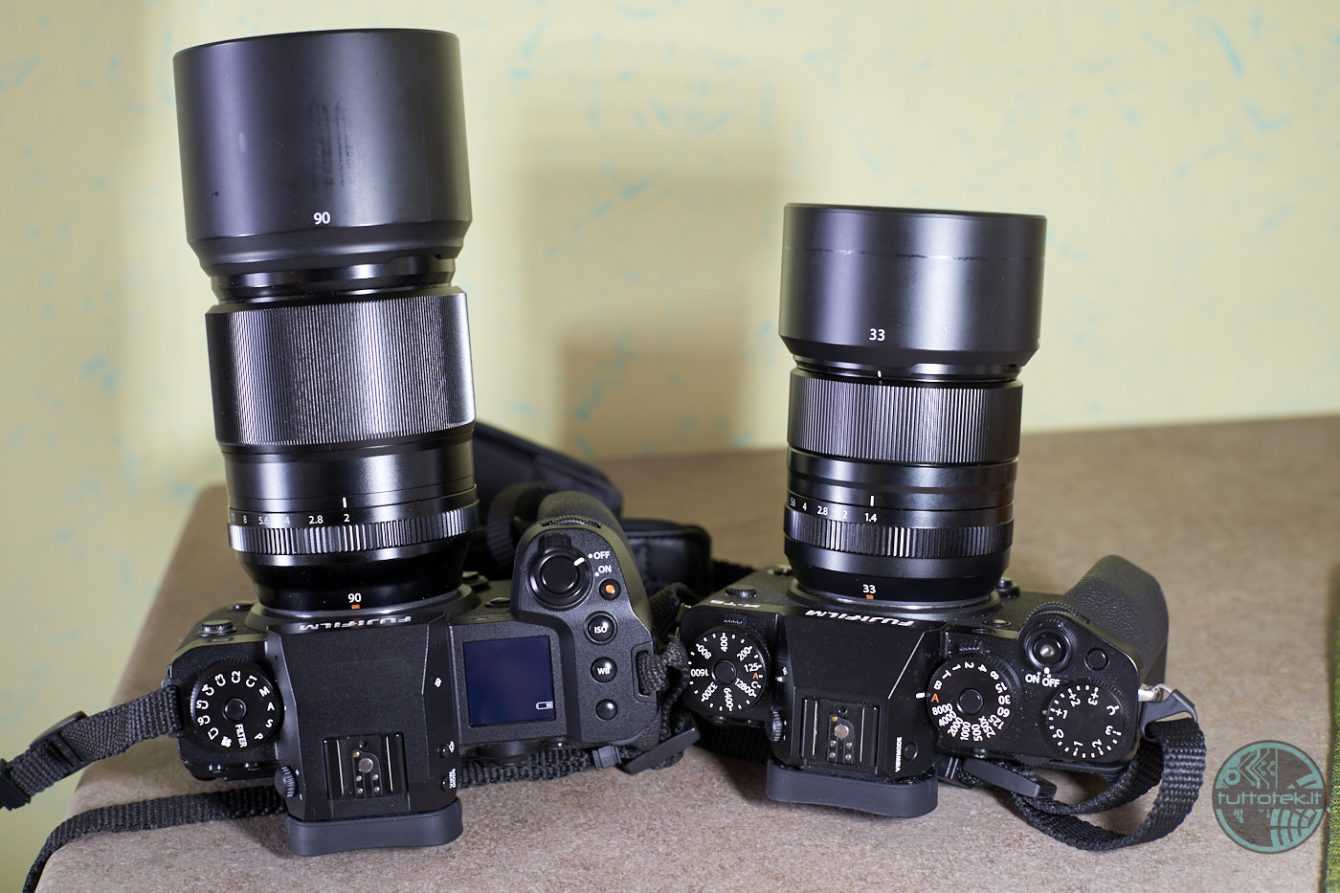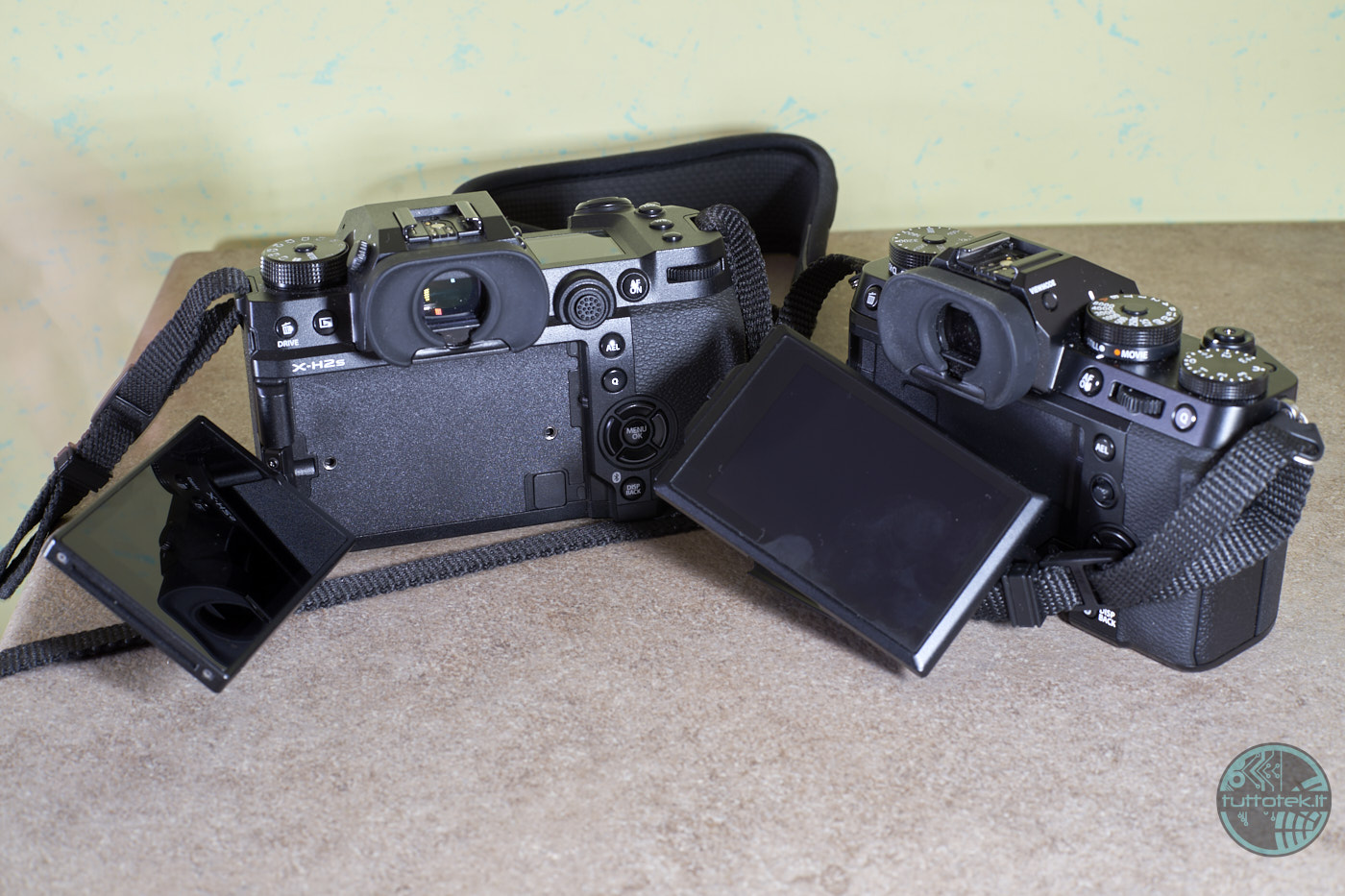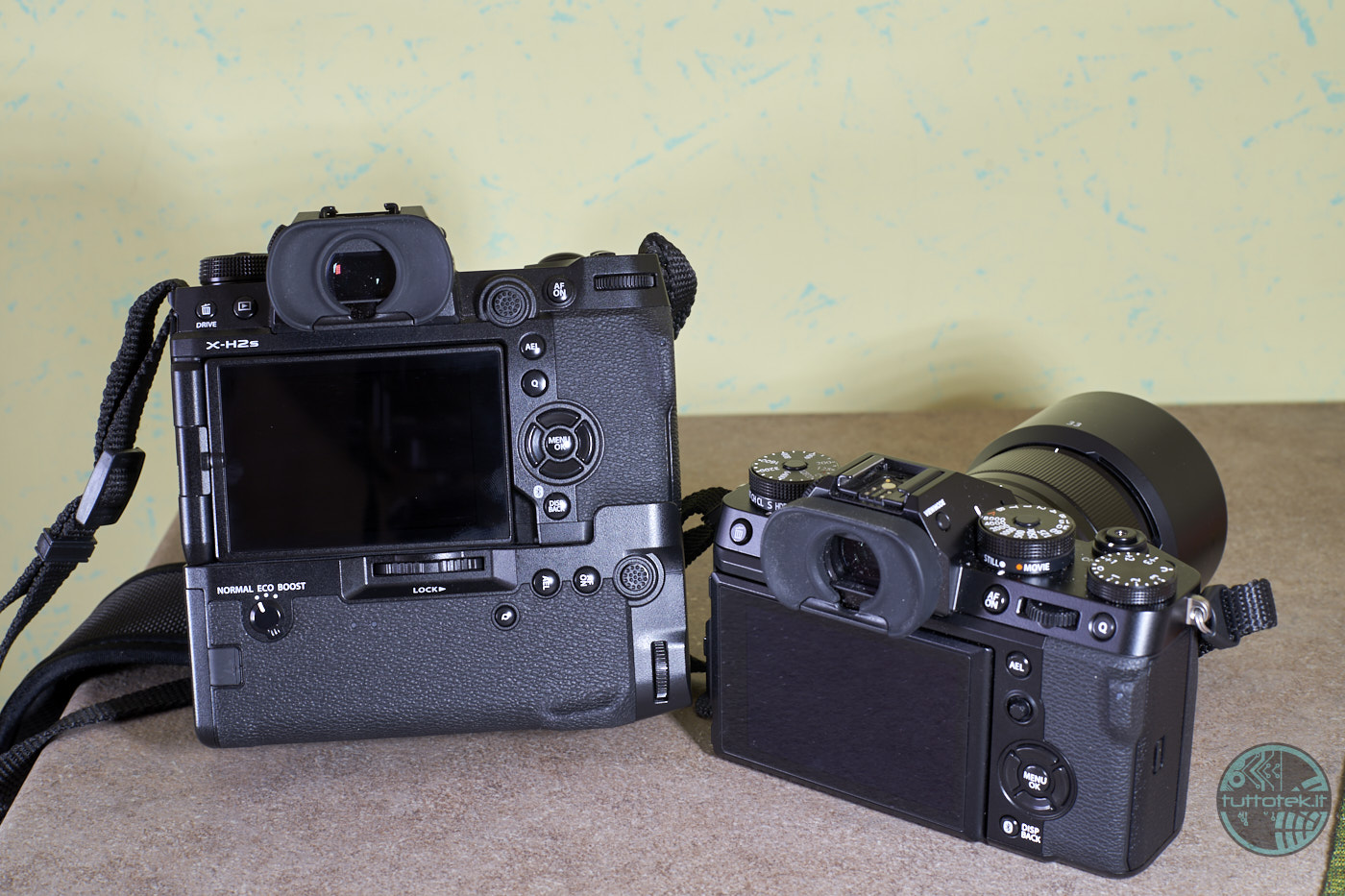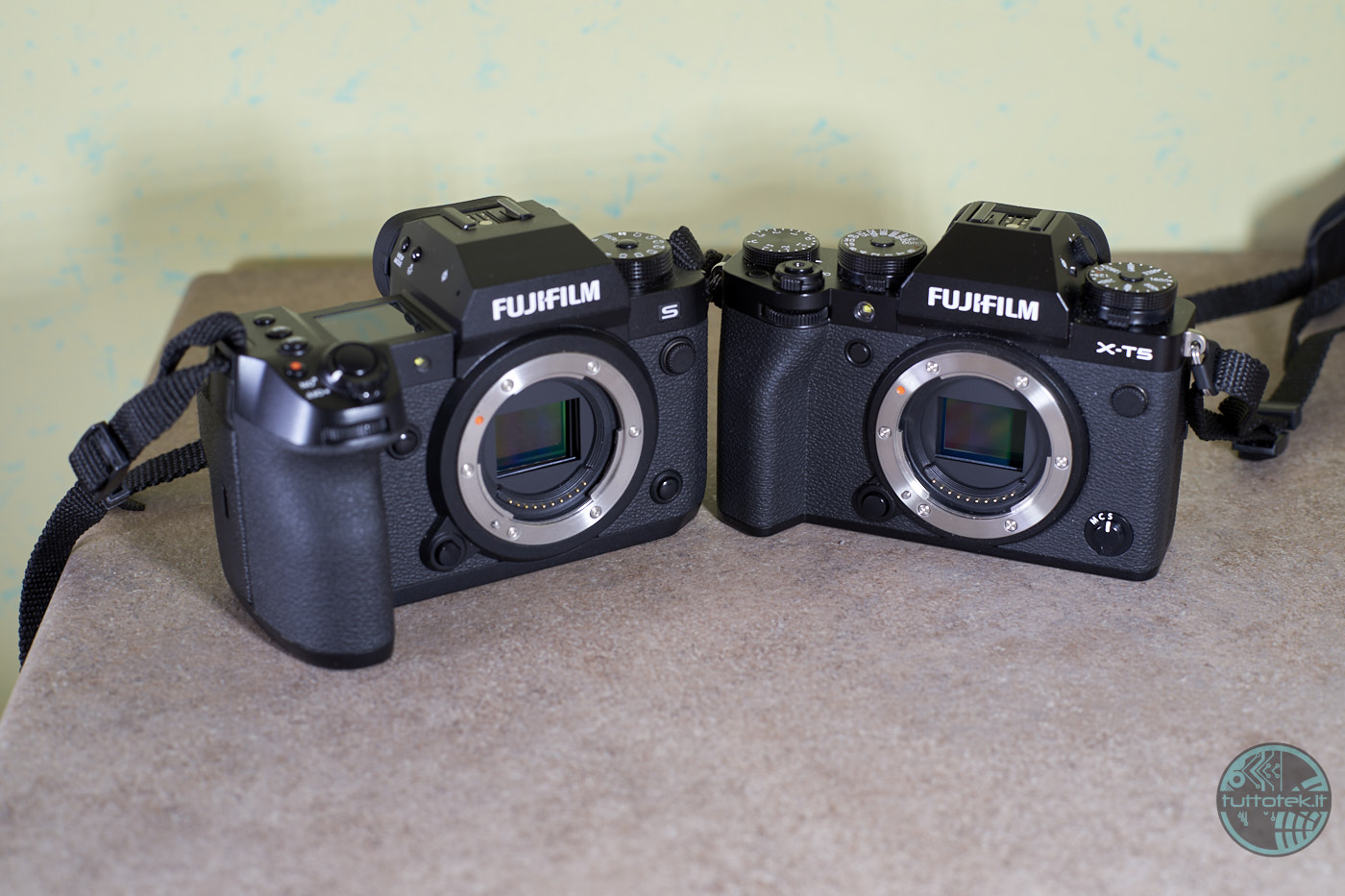Different philosophies, top bodies; in this fight Fujifilm X-T5 vs Fujifilm X-H2s we discover pros and cons of the top of the range from Fujifilm in this very close comparison
After reviewing both Fujifilm X-T5 and Fujifilm X-H2s, we have also made some comparisons to advise you in choosing between the two bodies, highlighting the differences between the H series and the T series.
I corpi | Fujifilm X-T5 vs Fujifilm X-H2s
The philosophies behind X-H2s and X-T5 are totally different. On the one hand we have a body designed to be an all-round machine, like a flagship, with many easily accessible dials and settings and a display on the shoulder, on the other a “classic” machine. For this reason, one of the fundamental points that can make one body choose rather than another is precisely related to the philosophy one prefers.
X-H2s is the perfect body for sports use, but also for videos, and/or studio contexts or events. Many buttons, many dials with easily customizable settings based on contexts and needs. A definitely heavy body that “makes itself felt” in the hand, and lends itself to use on a tripod or for many hours above all thanks to the vertical grip. X-T5, on the other hand, is quite the opposite. It is a machine designed to be “classic” but above all usable in contexts such as street ed il reportage. When the camera is off, it is possible to set times, ISO and aperture so as to turn it on only for the shot in order to go unnoticed. Which one to choose? In any case you will fall on your feet, the discriminating factor can simply be dictated by your personal tastes and by what you want to do with them even if both will be perfect in whatever genre you want to use them.

On the field in photo | Fujifilm X-T5 vs. Fujifilm X-H2s
In the picture we have the top that the market offers today with a big difference: 26mpx stacked sensor for X-H2S and 40mpx sensor for X-T5. This difference, which disappears when choosing the “smooth” version of the H2, immediately highlights the difference in reactivity in the sporting arena. We have 40 fps for H2s and 15 for T5. But if that’s not relevant to you, we can emphasize functional rather than qualitative differences. In fact, both machines offer enough resolution and file workability for any use. The real difference lies in the layout of the controls and the type of articulation of the display. In the photo area, the choice of double articulation on the X-T5 proves to be a winner: faster and more comfortable but above all invisible. In the T5’s chosen area, the street, it’s really easy to shoot while remaining invisible and this really makes the difference. Even in the landscape area, the T5 display proves to be more practical. The H2s, on the other hand, goes less unnoticed but manages, thanks to the display with lateral articulation, to meet any need, even vertically.
In this area we could therefore speak of a global draw and an advantage related to individual genres: more dynamic areas win H2s, quieter areas and where it is more important to be invisible, T5 wins. Genres such as macro, still life, landscape and portrait are basically on the same level and The cars are pretty much on par.

Sul campo in video | Fujifilm X-T5 vs Fujifilm X-H2s
In this context, we say it right away: the H2s is the winner on all fronts. The T5, however, defends itself very well. In terms of image quality the H2s takes advantage of the higher bit rate case, and in practice with the additional fan there will be no conditions to stop the H2s. To this we add the display with lateral articulation, also foldable, and we have everything that is desirable on the video side. Finally on H2s we find the inputs and outputs with 3.5mm jack and the native HDMI output. Undoubted advantages for recording in the professional field.
The T5 offers none of this, but it turns out to be a camera that can also record good quality video, albeit with a higher crop than the H2s. Videos are not his specialty, but the recorded contents are still usable even if they present some more critical issues from an operational point of view. It weighs the absence of a microphone jack (if not via an adapter), the lack of HDMI and the limitation of recording due to body heating in some conditions. The stabilization, on the other hand, is excellent on both bodies. We leave a video comparison between the two bodies at maximum resolution, it is a very simple clip but certainly indicative of many differences, you can find it here.
In this regard, the large shot is that of X-H2s, which has a smaller crop in the video, the one to the side is the video made by X-T5. The videos, of course, are without sound. The differences in color and exposure are due to the different lens (33 f/1.4 on H2s, and 35 f/1.4 on T5).

Which one to choose?
At this point we believe it is easy to find an answer. If you need a machine suitable for everything without any compromises, even on the video side, the answer is X-H2s. If, on the other hand, you need an excellent camera, especially in street and reportage, the answer is X-T5. In fact, there is also a third option represented by the X-H2 which offers 8k and 40mpx video in the same body as the X-H2s, which could please those looking for high resolution in a flagship body but renouncing the speed of the sensor stacked.
The choice therefore depends on you and your needs, according to our editorial staff the absolute top of this generation of Fujifilm is definitely the X-H2s, a machine that is certainly the best choice for all-round use. For everything else, especially the photo side, there’s the X-T5, a camera that was created for street and reportage photographers and which, visually, is the most beautiful on the market.
















Leave a Reply
View Comments